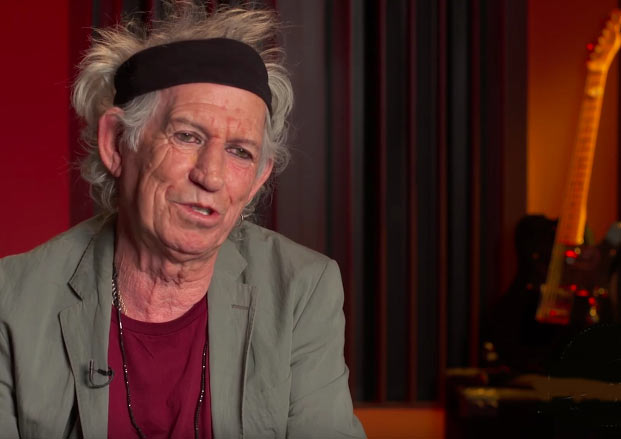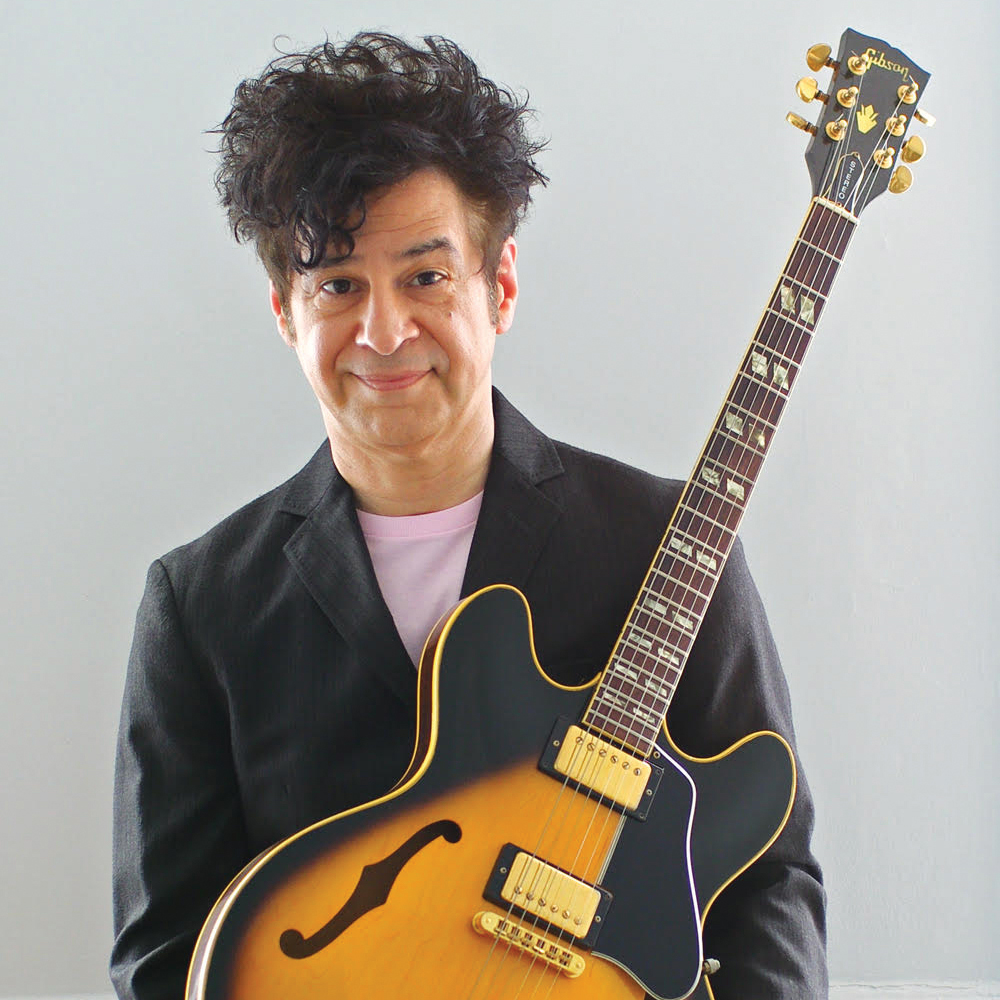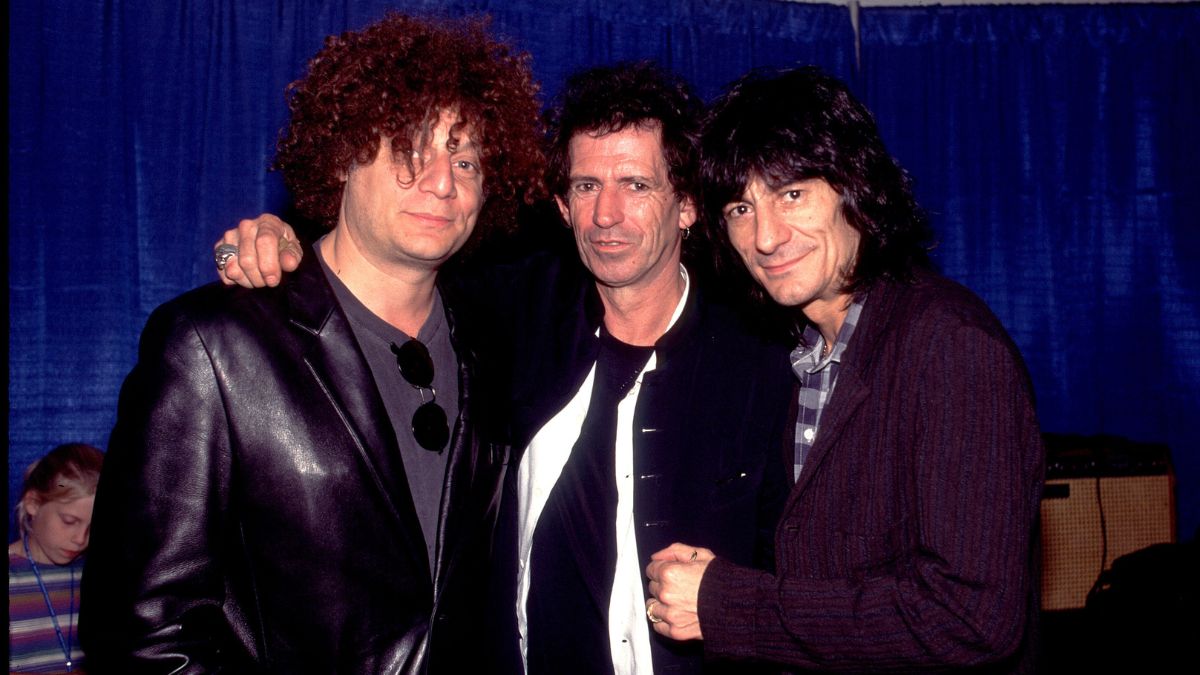Keith Richards Reveals the One Guitar He Can't Do Without

Keith Richards recently revealed the guitar that he would own if he could have only one. His answer came in response to a question posed on “Ask Keith Richards,” a web video series that gives fans a chance to ask questions of the Rolling Stones guitarist.
While his answer wasn’t exactly surprising, it wasn’t exactly definitive either. Take a look.
Richards has played many Telecasters over the years, but while his answer is general, he’s almost certainly referring to a very specific instrument: a Fifties-era butterscotch blonde blackguard Telecaster that is his most famous and goes by the name Micawber.
Richards received Micawber in December 1970 on his 27th birthday from fellow Fender fan Eric Clapton. At the time, Richards and the Stones were getting ready to work on the album that would become Exile on Main Street.
According to Fender, the guitar originally featured the standard single-coil pickup in the neck position. After the Stones’ 1972 tour, Richards replaced it with a Fifties-era Gibson PAF humbucker, which he turned backward so that the magnet poles are facing the guitar’s tail, which brightens the humbucker’s naturally dark tone.
The bridge pickup has been up to debate. For years it was believed that Richards used an original Broadcaster bridge pickup, an exceedingly rare single-coil of which few were made. Others have suggested it’s a lap-steel pickup (the fact that the pickup is held on by just two screws seems to support this), though some former Fender employees who apparently worked with the guitar say it’s actually an early Telecaster bridge pickup that is wound extra hot.
The guitar’s wiring is the real question. Richards almost always has the pickup selector in the bridge position (position 1), but the humbucker’s tone seems to be evident, which suggests something has been altered in its electronics. In their standard configuration, Telecasters are wired with the master volume closest to the pickup selector; the second knob is the tone control.
All the latest guitar news, interviews, lessons, reviews, deals and more, direct to your inbox!
But some have suggested that Richards has the guitar wired in Fender’s early Broadcaster/Nocaster/Telecaster configuration, which includes a master volume and a blend control. If so, in position 1 the bridge pickup would be active, and the blend control would allow him to dial in the amount of the humbucker neck pickup he desires. Position 2 would be neck pickup only, with the blend deactivated, and position 3 would activate the neck pickup and a tone capacitor that would reduce treble response for a dark tone.

PHOTO: Neil Lupin/Getty Images | Keef performing at London’s 02 Arena November 25, 2012.
Beyond its pickups, Micawber can be identified by its missing 17th-fret marker. Richards has made other modifications to the guitar, such as Sperzel locking tuners and a modified brass bridge in which the low E saddle is removed to accommodate his five-string tuning.
Richards was well into using that tuning at the time he received the guitar from Clapton.
“Around the same time I was getting into Telecasters I was experimenting with open tunings,” Richards told Guitar World in 2002. “I don’t know why. Maybe it was because around that time, ’67, we started having time off that we didn’t know what to do with. So I started to experiment with tunings.
- “Most people used open tuning basically just for slide. Nobody used it for anything else. But I wanted to use it for rhythm guitar. And what I found was, of all the guitars, the Telecaster really lent itself well to a dry, rhythm, five-string drone thing. In a way that tuning kept me developing as a guitarist. ‘Okay, now figure out a diminished sixth on it!’ You’ve got so little to work with. And that makes you reconsider six-string concert tuning. ‘Cause if there’s so much in that little space [i.e., five-string] how much am I missing on the other? You can transfer some of that back to six-string concert tuning. You can swap knowledge between one tuning and another.”
- You can see him playing Micawber in the live footage below, from February 2006, of the Rolling Stones playing “Brown Sugar” in front of 1.5 million people at Copacabana Beach.
In related news, Richards recently said the Rolling Stones’ next album is “in the can,” adding that “it might be a surprise to people, and I can’t say any more than that right now.”
The Stones were in the studio late last year, and according to Richards the sessions were extremely productive. “The Stones have never cut so many tracks in such a short time,” he said. “That’s not necessarily a guarantee of a good record, but there’s something in the works, and I’d just like to leave it up there in mystery land.”
Guitarist Ron Wood elaborated on the sessions in a separate interview with the Associated Press.
“We went in to cut some new songs, which we did, but we got on a blues streak,” he said. “We cut 11 blues in two days. They are extremely great cover versions of Howlin’ Wolf and Little Walter, among other blues people. But they really sound authentic.
“When we heard them back after not hearing them for a couple of months, we were, ‘Who’s that? It’s you.’ It sounded so authentic.”
The group’s last studio album was 2005’s A Bigger Bang.
The Rolling Stones recently released Totally Stripped, a DVD-CD combo from Eagle Rock Entertainment that features performances from 1995 made at small concert venues in Amsterdam, Paris and London following the departure of founding bassist Bill Wyman. Those live recordings and a pair of studio recordings were among the tracks collected on the 1995 album Stripped.
Christopher Scapelliti is editor-in-chief of Guitar Player magazine, the world’s longest-running guitar magazine, founded in 1967. In his extensive career, he has authored in-depth interviews with such guitarists as Pete Townshend, Slash, Billy Corgan, Jack White, Elvis Costello and Todd Rundgren, and audio professionals including Beatles engineers Geoff Emerick and Ken Scott. He is the co-author of Guitar Aficionado: The Collections: The Most Famous, Rare, and Valuable Guitars in the World, a founding editor of Guitar Aficionado magazine, and a former editor with Guitar World, Guitar for the Practicing Musician and Maximum Guitar. Apart from guitars, he maintains a collection of more than 30 vintage analog synthesizers.

